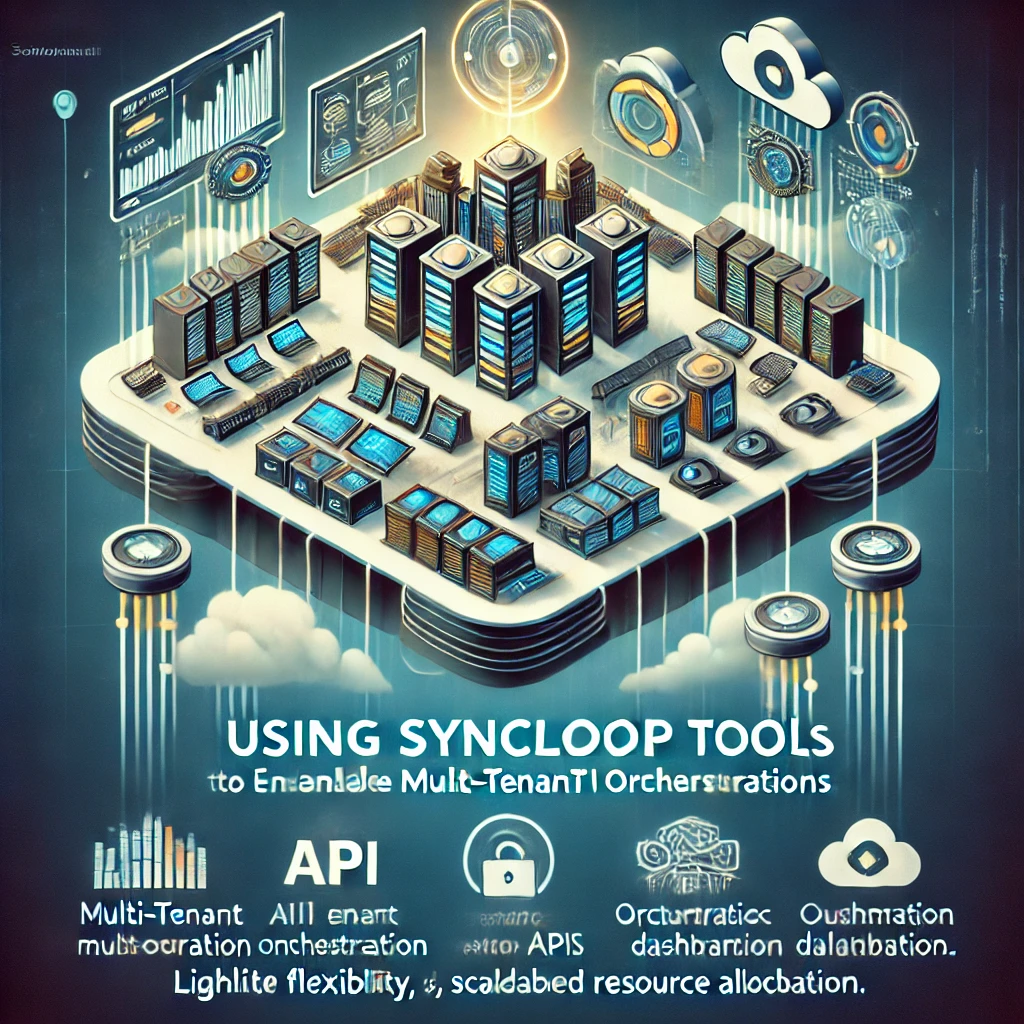Using Syncloop to Enable Multi-Tenant API Orchestration

Syncloop offers powerful features for orchestrating multi-tenant APIs, enabling developers to create tailored, secure, and scalable solutions. This blog explores how Syncloop simplifies multi-tenant API orchestration and provides best practices for implementation.
Key Challenges in Multi-Tenant API Orchestration
- Tenant Isolation: Ensuring data security and operational independence for each tenant.
- Customizability: Supporting tenant-specific workflows and configurations.
- Scalability: Handling increased API traffic and tenant numbers efficiently.
- Performance: Maintaining low latency and high reliability across tenants.
- Monitoring and Management: Tracking tenant-specific usage, errors, and metrics.
How Syncloop Simplifies Multi-Tenant API Orchestration
1. Dynamic Routing
- Route API requests to the appropriate services or databases based on tenant-specific identifiers.
2. Workflow Customization
- Build tenant-specific workflows with Syncloop’s visual workflow designer, enabling unique configurations per tenant.
3. Resource Segmentation
- Use Syncloop’s resource management tools to allocate and isolate resources like databases or compute instances for each tenant.
4. Role-Based Access Control (RBAC)
- Implement fine-grained access controls, ensuring that tenants can only access their authorized endpoints and data.
5. Real-Time Monitoring
- Track tenant-specific metrics, such as API usage, latency, and error rates, with Syncloop’s monitoring dashboards.
6. Multi-Tenant Scaling
- Leverage auto-scaling features to handle surges in tenant requests and resource utilization dynamically.
7. Audit Logging
- Maintain detailed logs of tenant-specific actions for compliance and debugging.
Benefits of Using Syncloop for Multi-Tenant Orchestration
1. Simplified Development
Use Syncloop’s prebuilt tools and low-code platform to reduce complexity and accelerate development.
2. Enhanced Scalability
Support growing tenant numbers and API traffic seamlessly with auto-scaling infrastructure.
3. Improved Security
Protect tenant data and operations with role-based access, encryption, and isolated workflows.
4. Customization at Scale
Deliver tailored services and workflows to tenants without duplicating codebases.
5. Actionable Insights
Gain real-time visibility into tenant activity and API performance with Syncloop’s analytics tools.
Real-World Applications of Multi-Tenant Orchestration with Syncloop
1. SaaS Platforms
- Deliver tenant-specific dashboards, workflows, and analytics for diverse client needs.
2. E-Commerce Marketplaces
- Enable multi-vendor support with isolated product catalogs, orders, and payment APIs.
3. Financial Services
- Provide customized financial APIs for client-specific reporting, compliance, and transactions.
4. Healthcare Applications
- Manage multi-tenant environments for clinics or hospitals with unique data handling requirements.
5. IoT Systems
- Orchestrate APIs for different device groups or organizations with customized workflows and data streams.
Steps to Implement Multi-Tenant Orchestration with Syncloop
Step 1: Define Tenant Requirements
- Identify the unique needs of each tenant, such as data isolation, workflows, and custom configurations.
Step 2: Implement Dynamic Routing
- Use Syncloop’s routing tools to direct requests based on tenant identifiers, such as subdomains or API keys.
Step 3: Build Tenant Workflows
- Design workflows for each tenant using Syncloop’s visual builder, incorporating tenant-specific logic.
Step 4: Enforce Access Controls
- Set up role-based permissions to restrict access to tenant data and endpoints.
Step 5: Monitor Tenant Activity
- Use Syncloop’s monitoring dashboards to track tenant-specific API usage and performance metrics.
Step 6: Scale Dynamically
- Configure auto-scaling to handle increasing traffic or tenant additions without affecting performance.
Best Practices for Multi-Tenant API Orchestration
- Use Modular Design: Build reusable components to streamline tenant-specific customizations.
- Isolate Data and Resources: Ensure strict separation between tenant resources to maintain security and independence.
- Optimize Workflows: Design workflows to minimize complexity and enhance performance.
- Monitor Continuously: Track usage, errors, and performance metrics to optimize services.
- Plan for Growth: Implement auto-scaling and flexible routing to accommodate future tenant expansions.
- Ensure Compliance: Use audit logs and access controls to meet regulatory and security standards.
Conclusion
Multi-tenant API orchestration is vital for delivering tailored, scalable, and secure services in SaaS platforms and enterprise systems. Syncloop simplifies this process with tools for dynamic routing, workflow customization, and real-time monitoring, enabling developers to build robust multi-tenant solutions efficiently.
Whether managing e-commerce marketplaces, SaaS platforms, or IoT systems, Syncloop empowers you to create flexible and reliable APIs that meet tenant needs. Embrace Syncloop to optimize your multi-tenant orchestration strategy and deliver exceptional experiences for your clients.
A conceptual illustration of multi-tenant API orchestration powered by Syncloop, showcasing dynamic routing, isolated workflows, and real-time monitoring dashboards.
Back to Blogs